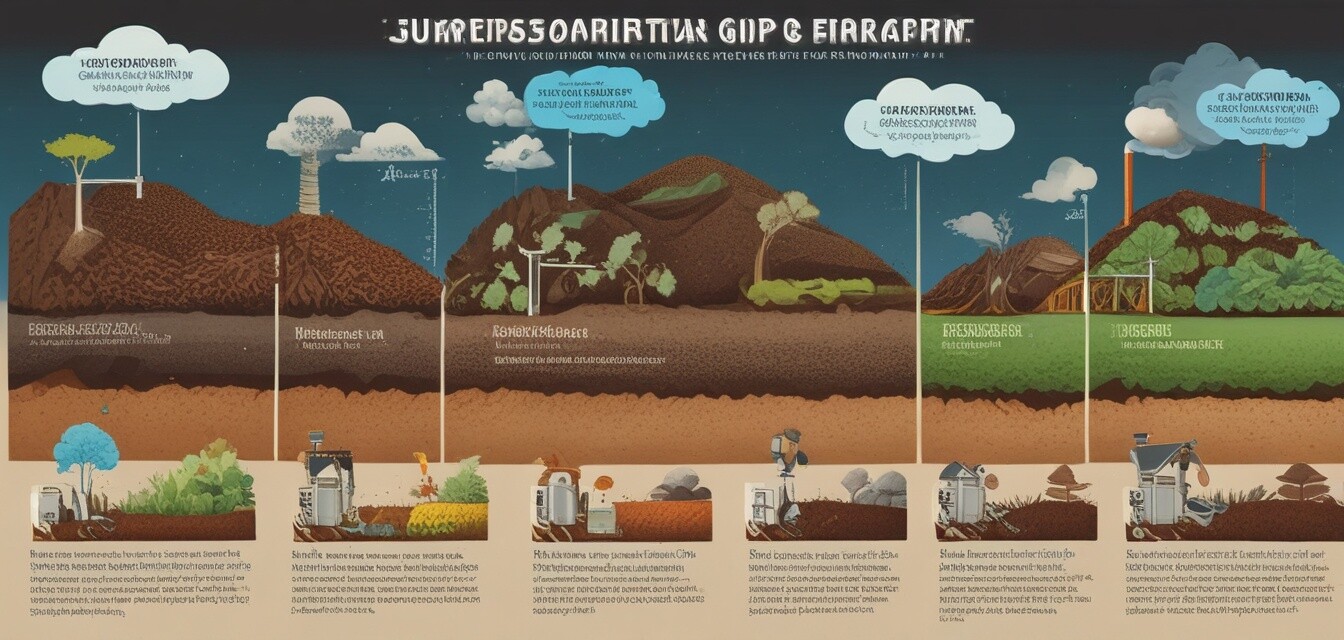
The Impact of Climate Change on Composting Practices
Key Takeaways
- Climate change is influencing composting methods with increased temperatures and changing precipitation patterns.
- Composting practices need to adapt to maintain efficiency in new environmental conditions.
- A wider variety of composting solutions are emerging to address these challenges.
- Community efforts are essential to promote sustainable composting amidst climate change.
- Innovation in composter technology contributes to better adaptation strategies.
As the world grapples with the realities of climate change, various sectors are feeling the implications, composting included. This article examines how rising temperatures, unpredictable weather patterns, and other climate-related factors are reshaping the way we compost. Understanding these impacts can help us adapt our practices for better results, even in the face of these challenges.
The Changing Climate: A Brief Overview
Climate change encompasses a variety of changes to our environment, primarily driven by human activities. Some of the major effects include:
- Increased temperatures leading to higher rates of evaporation.
- Altered precipitation patterns causing droughts in some regions and flooding in others.
- Increased frequency of extreme weather events.
How Climate Change Influences Composting
The effects of climate change on composting practices manifest in several crucial areas:
1. Temperature Fluctuations
Higher average temperatures can lead to faster composting processes, but they can also create anaerobic conditions if moisture levels are not managed properly. This can result in:
- Weakening of beneficial microbes.
- Odor issues and methane production.
- Need for increased monitoring and adjustments to composting practices.
2. Changes in Moisture Levels
Variability in rainfall directly impacts moisture levels in compost piles:
- Too little moisture can inhibit decomposition.
- Excess moisture can cause soggy piles, leading to anaerobic conditions.
3. Increased Pest Activity
Warmer temperatures can lead to more pests in composting areas, making it essential to implement pest management strategies. This might involve:
- Using closed composting systems.
- Regular monitoring for pests.
Adapting Composting Practices for a Changing Climate
As the effects of climate change unfold, composting practices must evolve accordingly. Here are several strategies that can be employed:
1. Diversifying Composting Methods
Investing in various composting solutions can help adapt to changing climate conditions. Options include:
- Bokashi composting systems: These work in indoor environments, allowing for year-round composting.
- Compost tumblers: These are easier to manage, providing more control over the composting process.
- Open air composters: Such systems can be used creatively to align with local climate conditions.
2. Technology and Innovation
Innovative products are emerging that can help meet the challenges posed by climate change. Some innovations include:
| Innovation | Description |
|---|---|
| Smart composters | These composters use sensors to monitor and manage conditions automatically, making composting easier. |
| Composting apps | These mobile applications provide guidance and tips for better composting practices, tailored to local climate conditions. |
| Community compost hubs | These provide shared composting resources for residents, fostering community engagement and support. |
3. Education and Community Engagement
Engaging the community can play a significant role in the adaptation of composting practices:
- Workshops to educate on new composting techniques.
- Community composting initiatives to encourage collective efforts.
Successful Adaptation Examples
Communities are implementing innovative solutions around composting, showcasing resilience against climate change:
| Community | Adaptation Strategy |
|---|---|
| City A | Introduced centralized composting facilities to manage waste better. |
| City B | Launched public educational campaigns on composting during extreme weather events. |
Final Thoughts
Climate change poses undeniable challenges to composting practices worldwide. However, by adopting new methods, leveraging technology, and fostering community efforts, we can continue composting effectively. With ongoing changes, flexibility and innovation in our approaches will play a crucial role in making composting a sustainable practice in the future.
Pros
- Adapting composting practices fosters sustainability.
- Community involvement boosts awareness and education.
- Innovative solutions can enhance efficiency in composting.
Cons
- May require initial investment in new technologies.
- Education and training can be time-consuming.
- Community engagement can vary significantly between areas.
For more insights and updates on composting news, be sure to check our Composting News section, or explore our comprehensive Buying Guides to learn more about effective composting solutions.